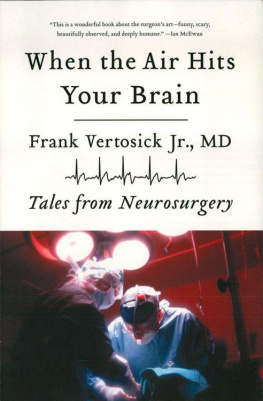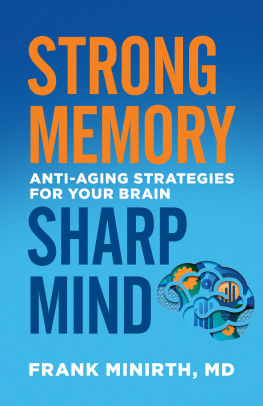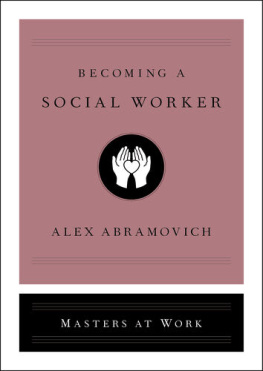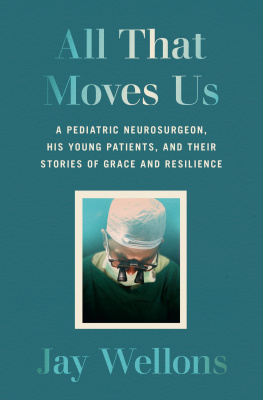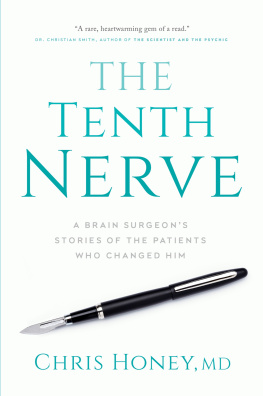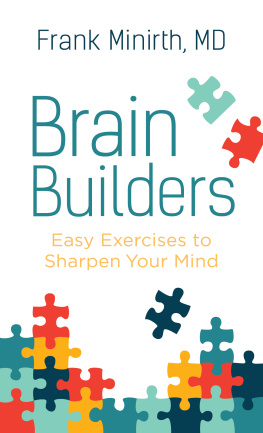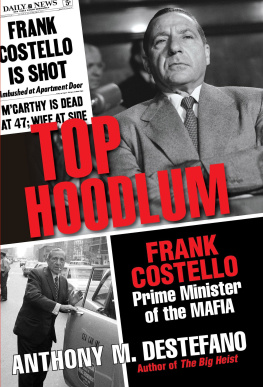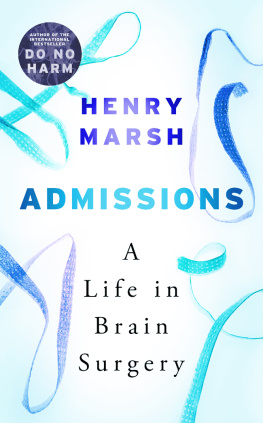At a time when doctors have forgotten how to be teachers, and medical training has become disease-oriented and depersonalizing, comes a book that can help alter that view. When the Air Hits Your Brain lets you feel the pain, grief and joy of practicing medicine. I know from experience that some physicians believe their M.D. makes them Medical Dieties but I know for me it meant My Disease. Read and understand the emotions and feelings physicians live with that they are poorly prepared for by their disease-oriented training. Physicians know how to think but not how to feel. Dr. Frank Vertosick is not a normal doctor, thank goodness. This book should be read by every medical student, doctor and present or potential patient. In other words, by all of us.
Dr. Bernie Siegel, author of Love, Medicine and Miracles
Dr. Frank Vertosick provides an amusing, insightful and honest inside view of the training of the neurosurgeon. This highly readable account of daily life on the wards shows all the humility, fortitude, and humanity that genuinely underlies this sometimes not well-understood but genuinely wonderful profession.
Dr. David W. Roberts, professor of surgery (neurosurgery), Dartmouth-Hitchcock Medical Center
When the Air Hits Your Brain
Frank T. Vertosick, Jr., M.D.
Tales of Neurosurgery

Copyright 2008, 1996 by Frank T. Vertosick, Jr., M.D.
All rights reserved
Printed in the United States of America
First published as a Norton paperback 2008
For information about permission to reproduce selections from this book, write to Permissions, W. W. Norton & Company, Inc., 500 Fifth Avenue, New York, NY 10110
For information about special discounts for bulk purchases, please contact W. W.
Norton Special Sales at specialsales@wwnorton.com or 800-233-4830
Manufacturing by Courier Westford
Book design by Beth Tondreau Design
Production manager: Devon Zahn
Library of Congress Cataloging-in-Publication Data
Vertosick, Frank T.
When the air hits your brain : tales of neurosurgery / by Frank T. Vertosick, Jr.
p. cm.
1. Nervous systemSurgeryMiscellanea. 2. Vertosick, Frank T.
3. NeurosurgeonsMiscellanea. I. Title
RD593.V47 1996
617.48dc20
95-9790
ISBN 0-393-03894-7
ISBN 978-0-393-33049-6 pbk.
W. W. Norton & Company, Inc., 500 Fifth Avenue, New York, N.Y. 10110 www.wwnorton.com
W. W. Norton & Company Ltd., Castle House, 75/76 Wells Street, London WIT 3QT
4 5 6 7 8 9 0
TO FRANK AND VERONICA,
who raised me to be whatever I wanted to be
Surgeons must be very careful
When they take their knife!
Underneath their fine incisions
Stirs the CulpritLife!
EMILY DICKINSON
Introduction
N eurosurgery is an arrogant occupation. Astronomers study the stars but never touch them. Particle physicists see God in the vapor trails of their great atom-smashers, but cannot see the particles themselves, cannot reach into protons and feel the quarks with their fingers. Molecular biologists sing the praises of the double helix, but the gene is forever an abstraction, invisible to the naked eye. These scientists must be content with the shadow nature casts upon their instruments and photographic emulsions. But not the neurosurgeon, for whom the greatest mystery of creation resides in a few pounds of greasy flesh and blood. Only the neurosurgeon dares to improve upon five billion years of evolution in a few hours.
The human brain. A trillion nerve cells storing electrical patterns more numerous than the water molecules of the worlds oceans. The souls tapestry lies woven in the brains nerve threads. Delicate, inviolate, the brain floats serenely in a bone vault like the crown jewel of biology. What motivated the vast leap in intellectual horsepower between chimp and man? Between tree dweller and moon walker? Is the brain a gift from God, or simply the jackpot of a trillion rolls of DNA dice?
The answers to these questions rest at the uncharted boundary between theology and science. We do know one certain thing about the brain: it is not unbreakable. When an unfortunate homo erectus plummeted from a cliff, suffering the first hominid head injury, mankind learned of the exquisite vulnerability of the pink goo between their ears. Surgeons of antiquity believed the brain sacrosanct, beyond their healing skills. As late as the nineteenth century, when bold surgeons attempted anythingeven the repair of a beating heartthe nervous system was still considered off-limits. Although ancient shamans trephined holes in the skull to allow evil demons to escape, they knew that breaching the dura, the brains leathery covering, meant the patients sure demise from infection, bleeding, coma.
Some mornings I awaken and wonder how I ended up a neurosurgeon. One day I was a poor college student rummaging under my sofa cushions for a few quarters to buy french fries; the next thing I knew I was wrist-deep in someones skull. What happened in between remains a blur.
There is a misconception that surgeons flock to their profession at an early age, drawn as if by a religious calling. Well, I didnt grow up planning to be a brain surgeon. I admit, as a child, I tried to build The Visible Head modelbut I threw away the macabre plastic replica,of a human noggin when the eyeballs fell out and rolled off the kitchen table. I should have taken this as an evil omen, but alas, I didnt. So here I am.
What draws people into glamorous medical careers? For some, its vindication for being a loser early in life: the grade school wimp beaten in the playground, the high school geek who never had a date. For others, its the secure (and large) income. As for me, I wandered too close to a dangerously seductive profession and wound up stuck for good, a fly in the spiders web. Had I never seen a brain operation, I doubt that the thought of doing brain surgery would have occurred to me. But once I viewed the living brain and was exposed to the seductiveness of the professions arrogance in the fleshI was hooked.
Brain surgeons have a well-cultivated public mystique, an aura of supreme intellectual and technical competence created by the imperious and brilliant Harvey Cushing, father of American neurosurgery and one of the first surgeons to specialize in brain operations. Cushing descended from a long line of medical men. Aristocratic and dashing, he drank his afternoon tea from fine china and stored his cigarettes in a sterling-silver case. He also had a keen eye for the media, fashioning himself into the medical superstar of the pre-television erahe even made the cover of Time magazine. Cushing knew that the brain was better PR than blocked colons and gangrenous legs. He endlessly exploited the publics fascination with his infant specialty.
But, in truth, the myth of the brain surgeon is largely thata myth. While one cant be stupid and be a neurosurgeon, brain surgery isnt the most intellectually demanding occupation on earth. I can read a CT scan, but the people who designed and built the scanners circuits tower over me in cognitive power. I see a blood clot crushing the life from a brain and deduce that the clot should be removed, but Gomer Pyle would reach the same conclusion.
My job is not easy, however. The high stakes make it tough. Unlike other parts of the body, the brain and spinal cord have little capacity for self-repair. If a general surgeon injures a piece of bowel during an abdominal operation, she simply stitches the injury, or, if thats not possible, removes the injured segment. With eight yards of bowel, theres plenty to spare. Even a trashed heart or liver is replaceable. But when I cut a nerve, it stays cut.

